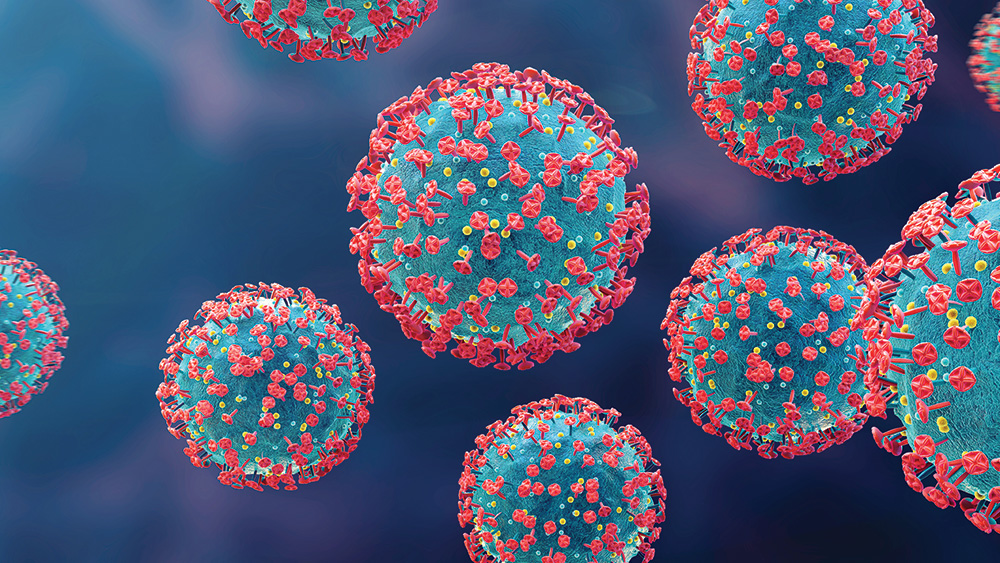
Researchers have discovered factors that are associated with an increased risk of post-acute sequelae of SARS-CoV-2 (PASC), also known as Long COVID.

Researchers have discovered factors that are associated with an increased risk of post-acute sequelae of SARS-CoV-2 (PASC), also known as Long COVID.
What you need to know
Many people recover quickly from COVID-19. But for some, symptoms can continue months after recovery and may involve multiple organs. This is known as Long COVID, or post-acute sequelae of SARS-CoV-2 (PASC). SARS-CoV-2 is the virus that causes COVID-19.
In a study supported by the National Institute of Allergy and Infectious Diseases (NIAID), the National Center for Advancing Translational Sciences, and the National Institute on Drug Abuse, researchers studied samples from COVID-19 patients over time, which led to many insights, including some of the risk factors for Long COVID.
What did the researchers do?
The researchers enrolled 209 people ages 18 to 89 who had laboratory-confirmed SARS-CoV-2 infections. The participants’ COVID-19 experiences ranged from having mild symptoms and never having to be hospitalized to needing mechanical ventilation in the intensive care unit.
With the participants’ consent, researchers studied their electronic health records, interviewed them about their symptoms, and took blood samples. All participants were asked to come back 60 and 90 days after their initial COVID-19 symptoms started.
The researchers compared the 209 patients with people who had not had COVID-19 and checked their findings against a separate group of 100 people who had COVID-19 and were 60 to 90 days beyond developing their initial symptoms.
What did the researchers find?
Three months after being diagnosed with COVID-19, half of the 209 participants reported fatigue. A quarter of them had a cough, and 18% had loss of smell or taste.
The researchers found that people were more likely to have symptoms 2 to 3 months after diagnosis if they had any of several risk factors at the time they were diagnosed, including:
-
Type 2 diabetes
-
Reactivated Epstein-Barr virus in their blood. Many people are infected with this virus in childhood. After infection, the virus persists in the body in an inactive form but may reactivate.
-
Autoantibodies. While antibodies should bind only to materials from outside the body, some people make antibodies against their own tissues. The researchers checked for a few different autoantibodies.
The researchers also made other observations. For example, people who had cold-like symptoms at 3 months also had low levels of the hormone cortisol.
These risk factors are only part of the picture, the researchers noted — a person's genetics likely also play a factor in their Long COVID risk.
Why is this research important?
This study takes a broad look at the biology of Long COVID and picks out some factors that are shared across many people.
As more research is done to understand Long COVID, scientists can use this information to develop new hypotheses on how it affects people's health. Then they can design new studies on the causes, prevention, and treatment of Long COVID. These studies will lead to treatments for people with long-term symptoms.
Where can I go to learn more?
-
The NIH-supported Researching COVID to Enhance Recovery (RECOVER) Initiative has launched multiple clinical trials to understand Long COVID. Register with RECOVER to get more information on how you can participate.
NIH Plans Research on “Long COVID”
-
This story from May 2021 shares the experience of one woman with Long COVID and some of NIH’s early steps toward creating the RECOVER Initiative.
Long COVID and Multisystem Inflammatory Syndrome in Children (MIS-C)
-
NIAID conducts and supports research to understand Long COVID and MIS-C, a condition in which different body parts can become inflamed, including the heart, lungs, kidneys, brain, skin, eyes, or gastrointestinal organs.
Sources
Su, Y., Yuan, D., Chen, D. G., Ng, R. H., Wang, K., Choi, J., Li, S., Hong, S., Zhang, R., Xie, J., Kornilov, S. A., Scherler, K., Pavlovitch-Bedzyk, A. J., Dong, S., Lausted, C., Lee, I., Fallen, S., Dai, C. L., Baloni, P., … Heath, J. R. (2022). Multiple early factors anticipate post-acute COVID-19 sequelae. Cell, 185(5), 881–895.e20. https://doi.org/10.1016/j.cell.2022.01.014

News and Stories
Read stories about the efforts underway to prevent, detect, and treat COVID-19 and its effects on our health.
 An official website of the United States government
An official website of the United States government

